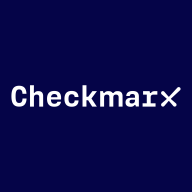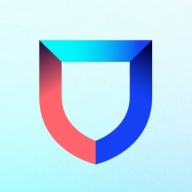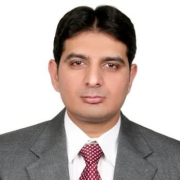


Checkmarx One and Lacework FortiCNAPP compete in the cybersecurity software category, focusing on code analysis and cloud infrastructure security, respectively. Checkmarx appears to have an upper hand in identifying code-level vulnerabilities known for its precision and ease of integration, while Lacework shines in continuous cloud security monitoring and compliance management.
Features: Checkmarx One provides effective code scanning without requiring code compilation and supports a wide range of programming languages, reducing false positives. It integrates seamlessly with major code repositories and offers customizable security checks. Lacework FortiCNAPP excels in anomaly detection and compliance management, prioritizing alerts automatically and monitoring configuration settings while supporting multiple security benchmarks to aid in security posture assessments across cloud environments.
Room for Improvement: Checkmarx One needs to further reduce false positives, enhance its reporting capabilities, add language support, and simplify configuration processes. Improvements in integration and dashboard flexibility are also necessary. Lacework FortiCNAPP requires advancements in data visibility, remediation, alert configuration, and threat-hunting features. Enhancing third-party integrations, visibility in compliance metrics, and pursuing FedRAMP authorization are suggested strategies.
Ease of Deployment and Customer Service: Checkmarx One offers a flexible deployment model suitable for on-premises, private, and hybrid clouds, backed by a strong customer support system although with issues in ticket closure times. Lacework FortiCNAPP is optimized for public and private cloud deployments with high-quality, responsive technical support praised for assisting in setup and configuration.
Pricing and ROI: Checkmarx One boasts competitive pricing and flexible licensing options, though some view it as costly. It proves valuable in delivering a strong ROI by enabling expedited secure application deployment and early vulnerability management. Lacework FortiCNAPP is also considered costly but offers long-term affordability and flexible resource allocation, emphasizing value in efficient security management and cost savings through vulnerability remediation.
| Product | Market Share (%) |
|---|---|
| Zafran Security | 1.1% |
| Checkmarx One | 0.9% |
| Lacework FortiCNAPP | 1.3% |
| Other | 96.7% |



| Company Size | Count |
|---|---|
| Small Business | 30 |
| Midsize Enterprise | 9 |
| Large Enterprise | 38 |
| Company Size | Count |
|---|---|
| Small Business | 4 |
| Midsize Enterprise | 4 |
| Large Enterprise | 3 |
Zafran Security integrates with existing security tools to identify and mitigate vulnerabilities effectively, proving that most critical vulnerabilities are not exploitable, optimizing threat management.
Zafran Security introduces an innovative operating model for managing security threats and vulnerabilities. By leveraging the threat exposure management platform, it pinpoints and prioritizes exploitable vulnerabilities, reducing risk through immediate remediation. This platform enhances your hybrid cloud security by normalizing vulnerability signals and integrating specific IT context data, such as CVE runtime presence and internet asset reachability, into its analysis. No longer reliant on patch windows, Zafran Security allows you to manage risks actively.
What are the key features of Zafran Security?
What benefits can users expect from Zafran Security?
In industries where security is paramount, such as finance and healthcare, Zafran Security provides invaluable protection by ensuring that only exploitable vulnerabilities are addressed. It allows entities to maintain robust security measures while allocating resources efficiently, fitting seamlessly into existing security strategies.
Checkmarx One is an enterprise cloud-native application security platform focused on providing cross-tool, correlated results to help AppSec and developer teams prioritize where to focus time and resources.
Checkmarx One offers comprehensive application scanning across the SDLC:
Checkmarx One provides everything you need to secure application development from the first line of code through deployment and runtime in the cloud. With an ever-evolving set of AppSec engines, correlation and prioritization features, and AI capabilities, Checkmarx One helps consolidate expanding lists of AppSec tools and make better sense of results. Its capabilities are designed to provide an improved developer experience to build trust with development teams and ensure the success of your AppSec program investment.
Lacework FortiCNAPP provides robust cloud security, combining vulnerability management and multi-cloud insight with user-friendly controls, machine learning detection, and compliance support.
Lacework FortiCNAPP specializes in cloud security by merging machine learning anomaly detection with agent-based vulnerability management to offer detailed alerts and compliance reports. Its comprehensive approach allows continuous monitoring across AWS and Kubernetes, providing insights from an attacker's perspective. The platform offers automation and seamless Slack integration, facilitating collaborative and efficient cloud security management. Users value its ability to handle multi-cloud environments and scan IAC scripts, configurations, and compute nodes across AWS and GCP.
What are the key features?Organizations across sectors leverage Lacework FortiCNAPP for cloud security, focusing on compliance, security posture, and vulnerability management. It is widely used for monitoring AWS and Kubernetes environments, scanning IAC scripts, configurations, and securing compute nodes. It supports multi-cloud security posture management and log ingestion, enabling companies to maintain strong cloud infrastructures without dedicated security layers.
We monitor all Vulnerability Management reviews to prevent fraudulent reviews and keep review quality high. We do not post reviews by company employees or direct competitors. We validate each review for authenticity via cross-reference with LinkedIn, and personal follow-up with the reviewer when necessary.